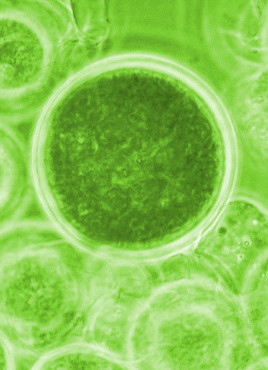Giant reef rings hold rich life
 Researchers have uncovered new details of ancient, giant, doughnut-shaped structures on the Great Barrier Reef.
Researchers have uncovered new details of ancient, giant, doughnut-shaped structures on the Great Barrier Reef.
Researchers have examined the species richness and diversity in the Reef’s Halimeda algal habitats, which are 10,000-year-old round reef-like structures built of limestone skeletons discarded by green algae.
“Even in the Great Barrier Reef Marine Park, one of the most iconic and well-studied coral reef systems on the planet, we’re still finding out things that we didn’t know,” says QUT marine geoscientist Mardi McNeil.
“There’s a lot of interest about the coral reefs but we can’t forget that there are other habitats within the Great Barrier Reef that are also potentially going to be impacted and we’re only just finding out what they are, where they are and what lives there.”
The latest studies are based on aerial 3D scans of the area, which have revealed great fields of doughnut-shaped circular mounds beyond the coral reefs, each about 200m across and up to 20 metres thick.
The scientists identified that the community of plants and animals that inhabit the bioherms is distinctly different from the surrounding inter-reef areas.
The Halimeda bioherms are complex habitats that host higher average species richness and diversity, for both plants and invertebrates, than the surrounding inter-reef seascape.
“These findings improve estimates of the biodiversity of the Great Barrier Reef and elevate Halimeda bioherms as a critically important inter-reef habitat,” Ms McNeil said.
“Regular long-term monitoring is needed to detect potential impacts to inter-reef biodiversity and ecosystem structure and function under future climate change scenarios.”
The Halimeda algal habitats cover more than twice the area of shallow coral reefs in the northern section of the Great Barrier Reef marine park.
“We’re still finding out what’s there, and how it’s connected to the coral reefs. These processes don’t happen in isolation, they’re all connected,” Ms McNeil said.
“While we’re trying to conserve the biodiversity that we do know about, there’s so much biodiversity that we haven’t counted yet and we don’t know about. You can’t manage what you don’t measure.
“We must cast our scientific inquiry wider than just the coral reef itself. There are deeper habitats that contribute to the Great Barrier Reef’s world heritage value that aren’t well-studied.
“One of the things that’s remarkable for me is this broader question – there’s so much about the ocean and what’s in it that we don’t yet know compared to what we know about terrestrial ecology or what’s on land, because we can’t see it and it’s challenging to study what’s under the ocean.”








 Print
Print